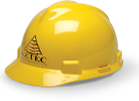Wind Damage Prevention
Residential Property Prevention from Wind and Driven Rain
This guide is intended to make the process easier by walking property owners, landlords, property managers and property management companies through the proper steps, beginning with an inspection of the property, followed by the installation of permanent hardware to put up shutters when the weather turns severe and ending with the best way to respond should water get inside the building.
Maintenance and Preparation:
Windows, Walls and Doors:
- Check for leaks around your windows and doors, especially near the corners.
- Check for peeling paint, it can be a sign of water getting into the wood.
- Inspect for discolorations in paint or caulking, swelling of the window or doorframe or surrounding materials.
- Flashing, which is typically a thin metal strip found around doors, windows, thresholds, chimneys, and roofs, is designed to prevent water intrusion in spaces where two different building surfaces meet.
- All vents, including gable vents, roof vents, and exhaust vents should be well anchored to the roof, flashed and sealed to prevent leaks.
Damaged Material:
Check for termite damage in wood materials such as walls, beams, or floors. Any wood exposed to the elements can decay and lead to moisture intrusion and insect infestation.
Exterior Wood Sheathing, Siding and Walls:
- Replace wood siding and sheathing if it appears to have water damage.
- Inspect wood-sided walls to ensure there is at least 8 inches between any wood and landscaping materials or dirt.
- Exterior walls should be kept well painted and sealed.
- Use a high quality silicone caulk around outside wall openings such as vents, outdoor electrical outlets and locations where cables or pipes go through the wall. Just before a storm, close restroom and any other vents with duct tape (but remove it after a storm and before using the vents.)
- Check the roof for signs of deterioration or leaks. Make sure all drains and gutters are clear.
- Shutter and seal gable end vents to prevent wind driven rain from entering attic space.
Landscaping:
- Landscape features should not include soil or other bedding material mounded up against walls.
- Keep trees trimmed so that branches are at least 7 feet away from any exterior building surface. This will help prolong the life of your siding and roof and prevent moisture and insects from entering the building.
- Vines should be kept off all exterior walls, because they can help open cracks in the siding, which allows moisture to enter the building. Inspect and adjust the spray pattern of the irrigation heads to minimize the water sprayed directly onto the building to avoid excessive water near the foundation.
Protecting Windows and Doors in Advance:
Windows:
The highest level of protection normally available for windows is professionally produced shutters that meet the Dade County (Florida) standards for opening protection. These standards require that the product be able to resist the impact of a 9 lb 2×4 traveling at 34 mph without penetration of the shutter, and if installed according to the manufacturer's recommendations, the impact should not break the glass behind the shutter. IBHS has created a Shutter Selection Guide to make the process of choosing window protection much easier. With so many new shutter materials on the market, it's more affordable than ever before.
Doors:
All doors should have three hinges and a dead-bolt lock with a minimum 1-inch bolt throw length. Metal or solid wood doors may withstand hurricane pressures and windborne debris, but if you have double entry doors (French doors), doors with glass or hollow-core doors, you may want to shutter them. For double entry doors, add barrel bolt restraints to the inactive door to help keep them from bursting open during a storm. Make sure the bolts connect through the door header and through the threshold into the subfloor.
Act Quickly if Water Intrusion Occurs:
The outside of the building may have survived the storm, but inside water intrusion may have soaked documents, computers and other valuable supplies. Water damage can threaten a business's ability to quickly bounce back after a storm. In addition to preparing the building against water damage, leaks can find their way in through any opening, it's important to plan for the worst before it happens. The IBHS suite of Open for Business® continuity planning and recovery tools can get you on the road to preparation. Should your building become damaged by a catastrophic event such as wind-driven rain, take appropriate actions to prevent further water damage once it is safe to do so. Water damage left unattended can result in structural failure or, potentially, mold growth.
Here's what to do:
- Immediately contact Aztec Construction & Restoration 877.529.8320
- Remove standing water and all moist materials, such as wet, damaged flooring or rugs, carpet, personal property, stock, equipment or inventory, and consult Aztec a licensed building professional that can determine the extent of the repairs necessary and work with your insurance company.
- Board up damaged windows and doors.
- After you have dealt with the immediate crises and Aztec is in route, contact your insurance agent to report the loss. Photograph everything that is affected by this loss and start your own file for this loss.
Wind, Water, Hail, Fire, Smoke & Mold Damage Repair
We respond to all forms of emergency property damage repair. Go »

24/7 Emergency Response
Our emergency response crews are quick and efficient.
Go »

Expert Restoration w/ Over 20 Yrs Experience
Aztec has what it takes to get your property damage quickly and safely taken care of. Go »
